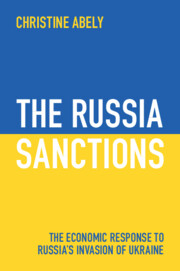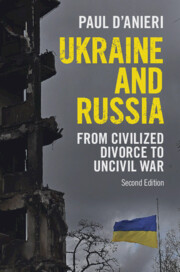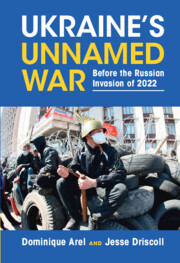131 results
Assessing aerial biodiversity over Keller Peninsula, King George Island, Maritime Antarctica, using DNA metabarcoding
-
- Journal:
- Antarctic Science / Volume 36 / Issue 1 / February 2024
- Published online by Cambridge University Press:
- 18 March 2024, pp. 37-46
-
- Article
- Export citation
7 - Resilience
-
- Book:
- A Concise History of the Aztecs
- Published online:
- 08 February 2024
- Print publication:
- 15 February 2024, pp 246-284
-
- Chapter
- Export citation
2 - Invasion
-
- Book:
- The Russia Sanctions
- Published online:
- 14 December 2023
- Print publication:
- 21 December 2023, pp 16-26
-
- Chapter
- Export citation
Conclusion
-
- Book:
- The Russia Sanctions
- Published online:
- 14 December 2023
- Print publication:
- 21 December 2023, pp 119-122
-
- Chapter
- Export citation

The Russia Sanctions
- The Economic Response to Russia's Invasion of Ukraine
-
- Published online:
- 14 December 2023
- Print publication:
- 21 December 2023
Chapter 1 - Writing the Forgotten War I: Henry’s War, 1542–1547
-
- Book:
- England's Insular Imagining
- Published online:
- 28 September 2023
- Print publication:
- 09 November 2023, pp 8-43
-
- Chapter
- Export citation
2 - Old Allies and New Friends
-
- Book:
- Neutrality and Collaboration in South China
- Published online:
- 01 June 2023
- Print publication:
- 15 June 2023, pp 63-100
-
- Chapter
- Export citation
20 - Việt Nam and the Genocide of Champa, 1470–1509
- from Part III - The Medieval World and Early Imperial Expansions
-
-
- Book:
- The Cambridge World History of Genocide
- Published online:
- 23 June 2023
- Print publication:
- 04 May 2023, pp 523-546
-
- Chapter
- Export citation
Chapter One - Introduction
-
- Book:
- The Making of the Doric Temple
- Published online:
- 22 July 2023
- Print publication:
- 20 April 2023, pp 1-40
-
- Chapter
- Export citation

Ukraine and Russia
- From Civilized Divorce to Uncivil War
-
- Published online:
- 13 April 2023
- Print publication:
- 23 March 2023
9 - War
-
- Book:
- Ukraine and Russia
- Published online:
- 13 April 2023
- Print publication:
- 23 March 2023, pp 272-307
-
- Chapter
- Export citation
10 - Conclusion: From Cold War to Hot War
-
- Book:
- Ukraine and Russia
- Published online:
- 13 April 2023
- Print publication:
- 23 March 2023, pp 308-332
-
- Chapter
- Export citation
Quantifying Wheat Blast Disease Induced Yield and Production Losses of Wheat: A Quasi-Natural Experiment
-
- Journal:
- Journal of Agricultural and Applied Economics / Volume 55 / Issue 1 / February 2023
- Published online by Cambridge University Press:
- 13 March 2023, pp. 34-56
-
- Article
-
- You have access
- Open access
- HTML
- Export citation
27 - The War at Sea: Trafalgar and Beyond
- from Part V - Other Spheres of War
-
-
- Book:
- The Cambridge History of the Napoleonic Wars
- Published online:
- 20 December 2022
- Print publication:
- 02 March 2023, pp 563-585
-
- Chapter
- Export citation
10 - The Royal Navy
- from Part II - The State of the Armed Forces
-
-
- Book:
- The Cambridge History of the Napoleonic Wars
- Published online:
- 20 December 2022
- Print publication:
- 02 March 2023, pp 190-206
-
- Chapter
- Export citation

Ukraine's Unnamed War
- Before the Russian Invasion of 2022
-
- Published online:
- 15 January 2023
- Print publication:
- 05 January 2023
1 - A War Within the “Russian World”
-
- Book:
- Ukraine's Unnamed War
- Published online:
- 15 January 2023
- Print publication:
- 05 January 2023, pp 1-22
-
- Chapter
- Export citation
8 - A Frozen Conflict Thaws
-
- Book:
- Ukraine's Unnamed War
- Published online:
- 15 January 2023
- Print publication:
- 05 January 2023, pp 171-196
-
- Chapter
- Export citation



